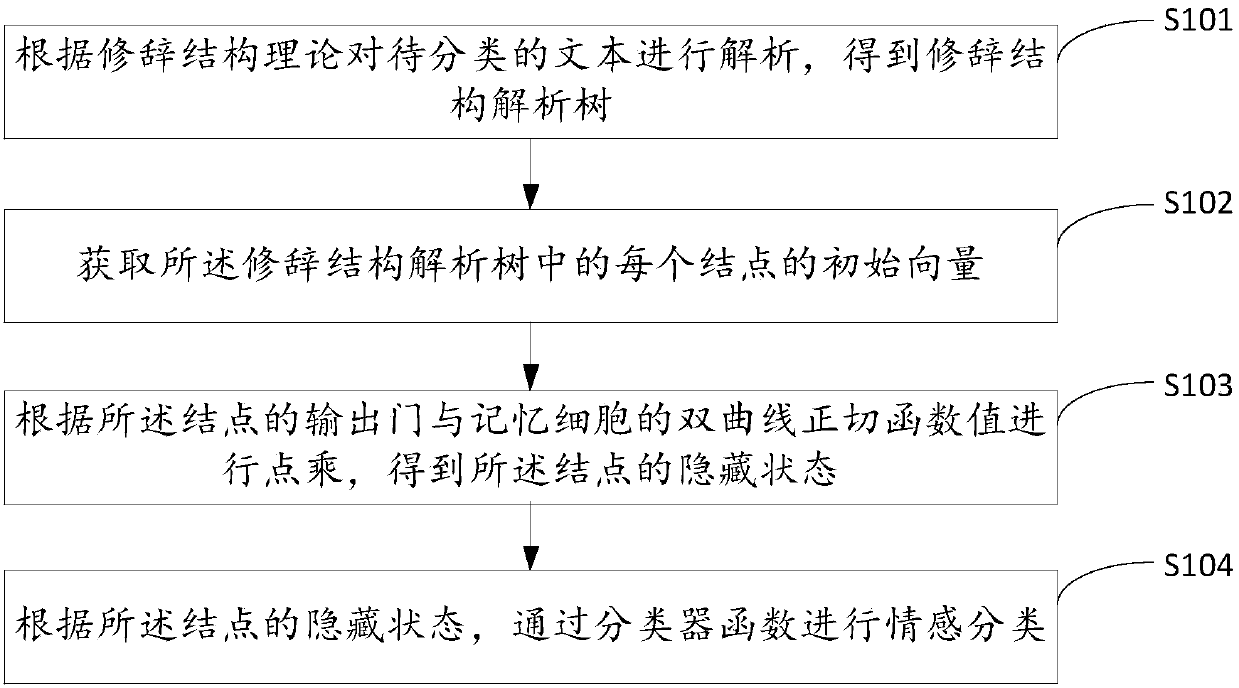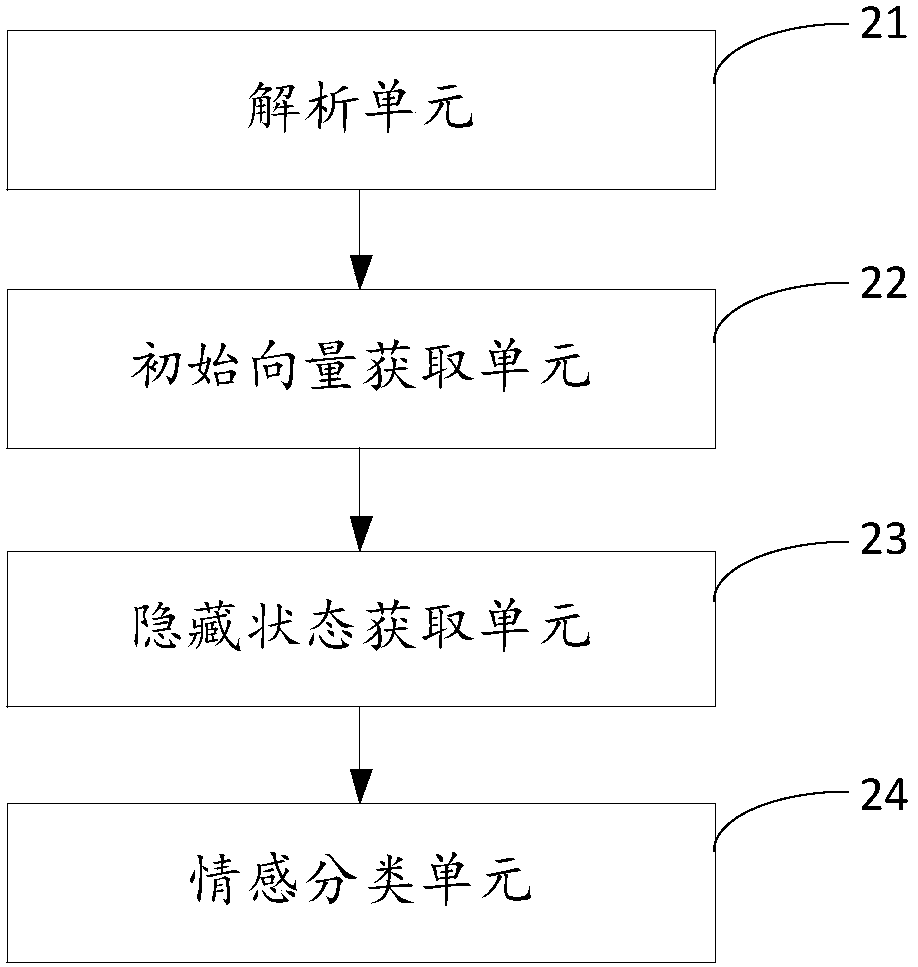A sentiment classification method and system
A technology of emotion classification and relationship, applied in the computer field, can solve the problems of insufficient semantic features, accuracy, poor effect of emotion classification, etc., and achieve the effect of improving classification accuracy and improving the expression of semantic features
- Summary
- Abstract
- Description
- Claims
- Application Information
AI Technical Summary
Problems solved by technology
Method used
Image
Examples
Embodiment 1
[0020] figure 1 The implementation flow of the emotion classification method provided by the first embodiment of the present invention is shown. For the convenience of description, only the parts related to the embodiment of the present invention are shown, and the details are as follows:
[0021] In step S101, the text to be classified is analyzed according to the rhetorical structure theory to obtain a rhetorical structure analysis tree.
[0022] In the embodiment of the present invention, Rhetorical Structure Theory (RST) is a descriptive theory about text organization based on the relationship between text parts. The rhetorical structure theory puts forward 23 rhetorical relations in total, including elaboration, comparison, proof and so on. The rhetorical structure relationship divides a piece of text into a central segment and peripheral segments, which are called core and peripheral. The relationship between each layer of nodes in the rhetorical structure parsing tree ...
Embodiment 2
[0062] figure 2 It shows a schematic structural diagram of the emotion classification system provided by the second embodiment of the present invention. For the convenience of illustration, only the parts related to the embodiment of the present invention are shown, including: analysis unit 21, initial vector acquisition unit 22, hidden state acquisition Unit 23 and sentiment classification unit 24, wherein:
[0063] The parsing unit 21 is configured to parse the text to be classified according to the rhetorical structure theory to obtain a rhetorical structure parsing tree.
[0064] In the embodiment of the present invention, Rhetorical Structure Theory (RST) is a descriptive theory about text organization based on the relationship between text parts. The rhetorical structure theory puts forward 23 rhetorical relations in total, including elaboration, comparison, proof and so on. The rhetorical structure relationship divides a piece of text into a central segment and perip...
PUM
 Login to View More
Login to View More Abstract
Description
Claims
Application Information
 Login to View More
Login to View More - R&D
- Intellectual Property
- Life Sciences
- Materials
- Tech Scout
- Unparalleled Data Quality
- Higher Quality Content
- 60% Fewer Hallucinations
Browse by: Latest US Patents, China's latest patents, Technical Efficacy Thesaurus, Application Domain, Technology Topic, Popular Technical Reports.
© 2025 PatSnap. All rights reserved.Legal|Privacy policy|Modern Slavery Act Transparency Statement|Sitemap|About US| Contact US: help@patsnap.com


